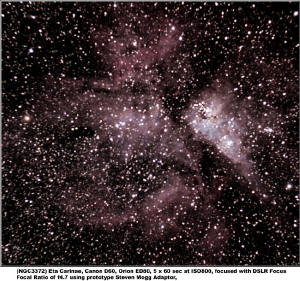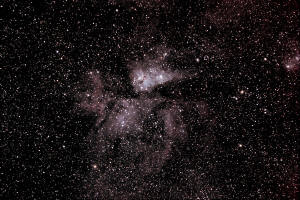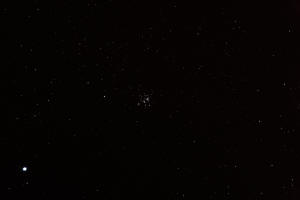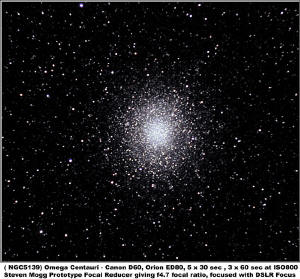[Home]
[ORDER] [Design
and Development] [Review] [Test Images] [SLR Adapter Images]
Recently Paul Russell conducted a review of the Williams
Optics 0.8X Focal Reducer and Field Flattener, Meade and Celestron focal
reducer, and the Mogg Adapters T-0.66FR2 as used on the Orion ED-80.
The text of his report is
available
A number of people have been interested in using DSLR
camera with the new
Orion 80mm ED Apochromatic Refractor. George Tucker
contacted me and asked if I could have a look at making a focal reducer
for this setup. The scope has an 80mm aperture and FL of 600mm giving f/7.5
focal ratio. It has a 2' focuser and gives very good performance for the price
by all accounts. What's nice about the ED80 is that Orion have been able to
produce a scope that gives performance that approaches the top of the class at a
price that doesn't. As one reviewer of the ED80 put it:
"In the battle of who makes the
best compact, multipurpose telescope an aspect has been lost in all the rhetoric
- it is possible to buy a telescope that does not claim to be the finest in the
world, but is one heck of a good balance between aperture, focal length, overall
optical performance and cost"
Company 7 Orion 80mm ED
Review
I think this concept fits well with the whole motivation
behind use webcams as imaging devices and the Mogg Adapter product range. So far
the missing link for the ED80 is a reasonable priced Focal Reducer. One that may
not be perfect but delivers good quality at a reasonable price. The alternatives
such as the Televue 0.8
TV range reflect the pinnacle of quality and price. The opportunity is to
develop a focal reducer that's performance equals that of the ED80 at the same
reasonable price.
A suitable focal reducer would need to be mounted in 2'
tube with a T-Thread mounting at the camera end. Standard T-Rings can then be
used to mount all models of DSLR camera. The 2' mounting will enable a larger
lens to be used which would accommodate the larger DSLR imaging chip reducing
vignetting effects. The focal reducer will work equally well with any
scope in the 400 - 800 mm focal length range and is not
limited to the ED80.
The first step is to make some proto types and do some
testing. I sent a couple of proto types to Chris Venter. Chris has developed a
very useful DSLR camera control and focusing program caller
DSLR Focus, and was keen to help out. The initial
focal reducers was designed to give a reduction of 0.6. You can see the results
of this below with the Eta Carinae images. I think this is a bit to much
reduction as there is significant elongation of star images as you move towards
the edges of the full frame. Some elongation is evident in the full frame image
of the Jewel Box which was taken without a focal reducer. The Televue reducer
image of Eta Carinae show reasonable elongation.
I think we were a bit optimistic trying for a 0.6
reduction. This reducer is right on the limit of available inwards focuser
travel of the ED80 and the elongation of the star images is a little to strong
to be useful. A much better result is achieved with a 0.75 reduction unit. Although there is some merit to the higher
reduction ratios as they reduce exposure times for dim objects. They might be
very useful for galaxy hunting. A variable
ratio focal reducer between 0.75 and 0.66 would give you the best of both worlds. This will enable you to use it at 0.75
when you need the full frame and 0.66 when you need the extra
help with exposure time and can crop the image down a little.
The focal reducer has a 48mm filter thread on the scope
end so you can fit your favourite 2' filters when required.
Comments - Suggestions - Questions:
If you have any comments, suggestions or questions please
email
me.
Ordering:
The part number will be F2-VFR-T. Variable focal
reduction fro DSLR Camera between f/0.75 and f/0.66.
Availability:
Orders are now being taken for this adapter. Go to my
order page at:
order page.
Price:
The variable focal reducer costs US$75.
Return to TOP
Description
|
Image
(Click image to see full
size)
|
Eta Carinae,
Canon D60, ED80, 5 x 60sec at ISO800,
focused with DSLR Focus,
Focal ratio f/4.7 using prototype Mogg Focal Reducer (f/0.62).
|
 |
|
Eta Carinea -
full frame of above image. You can see a large amount of star elongation. A
reduction ratio of 0.6 is bit to extreme. |
 |
Eta Carinea -
full frame using
Televue 0.8 focal
reducer. Canon D60, ED80, 5 x 60sec at ISO800, focused with
DSLR Focus, Focal ratio
f/6.
|
 |
Jewel Box -
full frame Canon D60, ED80. You can see
that in the corners there is a small amount of elongation
|
 |
Omega Centauri -
Canon D60, ED80, 5 x 60sec at ISO800,
focused with DSLR Focus,
Focal ratio f/4.7 using prototype Mogg Focal Reducer (f/0.62).
|
 |
Return to TOP




